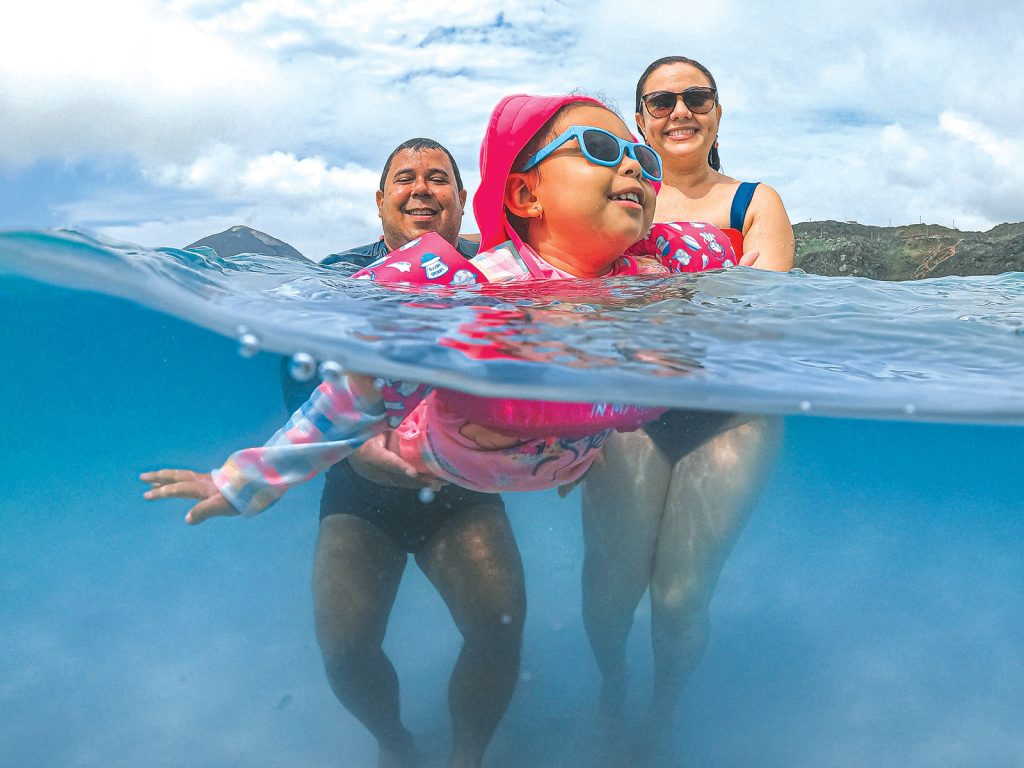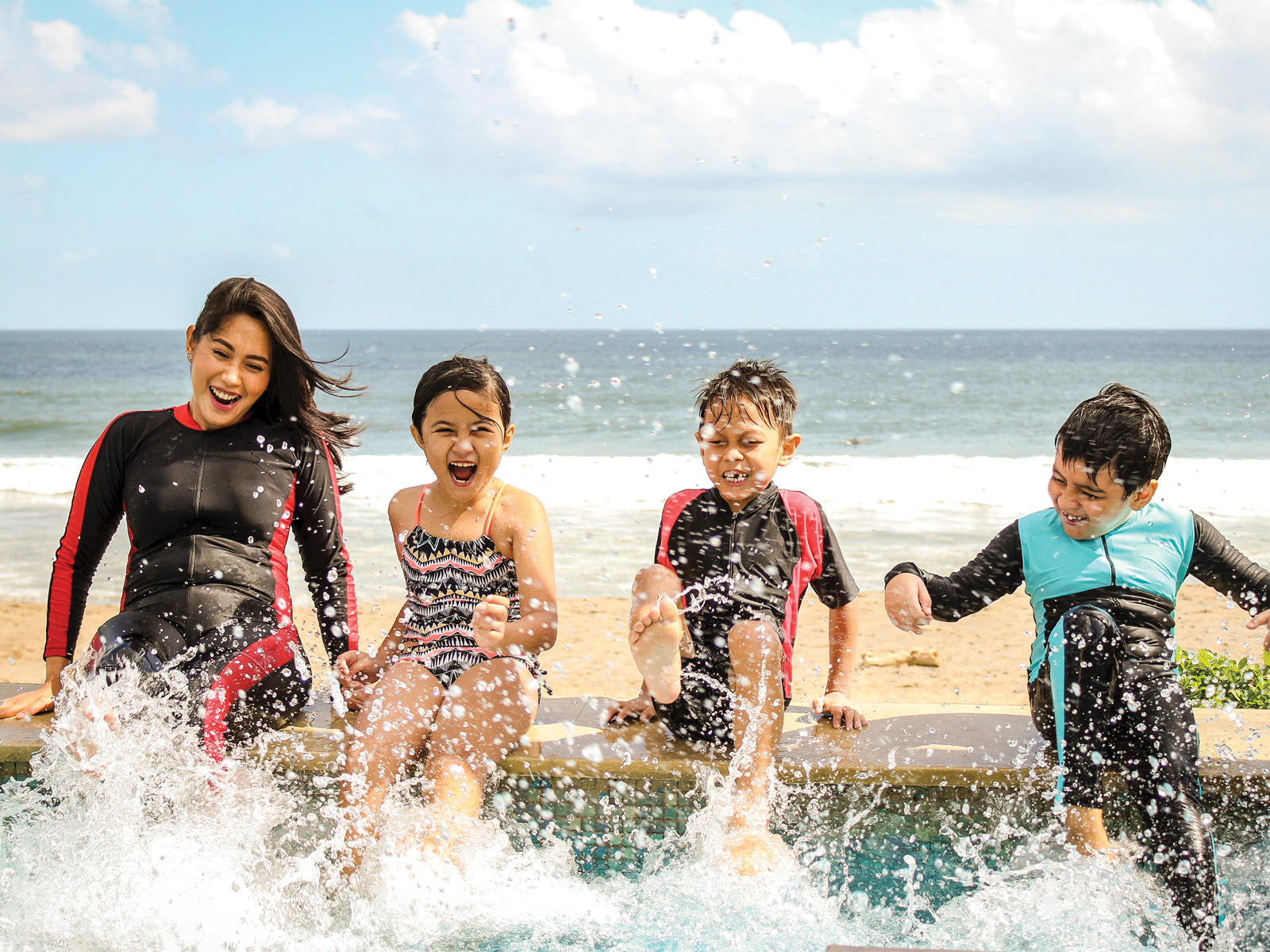Everyone into the water…safely!
Learning water safety and swimming skills is even more important for kids who have the urge to wander, get fixated on water and have limited understanding of dangerous situations.
Swimming is a favourite family recreational activity. And, for a lot of children, learning to swim is a great way to have fun and stay fit at the same time.
It’s a good idea to use swim lessons as a safe introduction to the water. Teaching water safety is key – especially for children on the spectrum in order to prevent injuries and potential drownings. Always provide close supervision and a designated water watcher and inspect fences, safety equipment and lifts etc. All young children should never be more than an arm’s length away when they are in the water or nearby.

Not all water is the same
Something to remember is that water from pools and bathtubs is different from water that is in lakes, beaches, rivers, ponds, and creeks.
• Water in pools and bathtubs is clear and calm. You can see through to the bottom when you look at it. It also has a very easy to way to get in and get out. You can use stairs to walk in or easily put your foot over the edge.
• Water in beaches, rivers, ponds, and creeks is the opposite. This water is usually dark so you cannot see very far. It can be very deep and things like waves, boats, and bad weather can make it dangerous to swim. In this kind of water, you have to make sure you are safe from rocks, animals, and litter.
Reaping the rewards
All kids benefit from exercise both mentally and physically. When kids have mobility challenges, swimming is also an ideal way to acquire physical development skills, alleviate pressure on their joints and chest and making movement less awkward or painful. Using swimming as a source of movement and exercise can lead to healthy weight management, (burning calories and building muscle), strengthening of the limbs, heart and lungs without causing pressure points in the body or pain in joints is a good step towards improved health and quality of life.
Motor skills: When children learn how to move their limbs, they become more aware of more precise motor functions. The benefit to swimming is that it requires consistent, coordinated limb movement, regular kicking of the legs and moving of the arms—all activities which improve flexibility as well as motor functions for standing, sitting, walking, jumping, lifting and kicking etc.
Reducing pain: Aqua therapy, which utilizes the buoyancy and warmth of the water, is therapeutic for children living with conditions such as sclerosis, arthritis, cerebral palsy, Heated pools also relax muscles and relieve tension in the body.
Mood booster: Time spent in the water seems to make kids happier while building self-esteem and confidence. It reduces stress, helps relieve anxiety, and can help reduce fatigue.
Create safe swimming zones
If you have a pool or access to a pool, it’s important that you make sure that safety rules are in place. Here’s some expert advice.
• Insist upon four-sided fencing that isn’t easy to climb fencing around the pool—do not rely on the house as one of the barriers and invest in a gate that is self-closing and self-latching. Move objects that could be used as a makeshift ladder (lawn chairs, etc.) away from the fence.
• Keep a clean pool deck without toys and debris to reduce the temptation to play near the pool.
• Teach your child that you always enter the water first and then your child and if you have to leave the area, take your youngster with you.
• Establish pool rules. These can include: swim with a buddy, children must have an adult with them at all times, and no glass containers, alcohol or drugs around the pool.
• Have readily accessible reaching or throwing assists, a working phone and first aid kit.
• Learn what to do in case of emergency-take a Red Cross First Aid course and encourage youth to take a Red Cross Lifeguard Course.
Keep your promises
When you tell your child that you will go swimming, keep your word. This is not only a good parenting strategy overall but it also eliminates the child’s disappointment and possible quick and unsafe decision to get some water time on his or her own because he/she missed out.
Akhi Odayin is an intern writer for the Canadian Abilities foundation (CAF).














